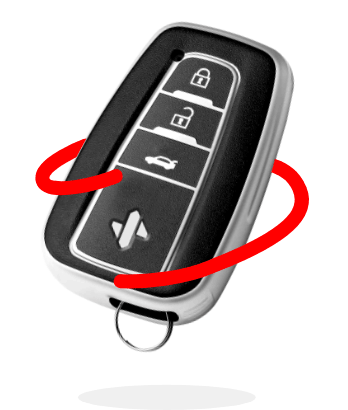Many people rely on financing options to make owning a vehicle a reality when purchasing a car. One common term you'll come across in auto financing is the "car note." In this post, we'll dive deep into what exactly a car note is, how it works, and why it's crucial to understand its implications.
WHAT IS A CAR NOTE?
Simply put, a car note refers to your monthly payment towards your vehicle's loan or lease agreement. It includes the principal amount borrowed, the interest the lender charges, and any additional fees or charges associated with the loan.
PURPOSE OF A CAR NOTE
The primary purpose of a car note is to enable individuals to purchase a car without paying the full amount upfront. By spreading the cost over some time – usually several years – car notes make owning a vehicle more affordable for many consumers.
HOW CAR NOTES WORK
When you finance a car through a loan, you borrow money from a lender and agree to repay it over a specific period — typically three to seven years. Each month, you make a fixed payment that covers the interest accrued and reduces the principal amount. The interest rate and loan term determine the total amount you'll pay over the life of the loan.
3 TYPES OF CAR NOTES
1. Fixed-Rate Loans
In a fixed-rate loan, the interest rate remains constant throughout the loan term. This provides stability as your monthly payments stay the same, making it easier to budget and plan your finances.
2. Variable-Rate Loans
Variable-rate loans, on the other hand, have interest rates that fluctuate based on market conditions. While these loans might initially offer lower interest rates, there’s a risk that the rate could rise in the future, increasing your monthly payments.
3. Lease Agreements
Leasing a car involves making regular payments to use the vehicle for a set period, typically two to three years. Instead of owning the car, you're renting it from the leasing company. You can return the car, purchase it, or lease a new one at the end of the lease term.
Leasing offers lower monthly payments and the ability to drive a new car every few years. However, it also comes with limitations, such as mileage restrictions and potential additional charges for excessive wear and tear.
COMPONENTS OF A CAR NOTE
Understanding the components of a car note is crucial for evaluating loan terms and calculating your monthly payments accurately. Here are the key elements to consider:
● Principle Amount: The principal amount refers to the total cost of the vehicle, including taxes and other fees. It's the initial loan balance that you're required to repay.
● Interest Rate: The interest rate is the percentage the lender charges for borrowing the money. It determines the cost of financing and directly affects your monthly payments.
● Loan Term: The loan term is the duration over which you'll make payments. Shorter terms result in higher monthly payments but less interest paid overall, while longer terms spread out the cost but result in higher total interest payments.
● Monthly Payment: The monthly payment is the fixed amount you'll pay monthly toward the loan. It consists of both principal and interest portions.
● Down Payment: A down payment is a lump sum paid upfront, reducing the loan amount. A larger down payment can lower your monthly payments and save you money on interest.
● Other Fees: Additional fees, such as taxes, registration costs, and documentation fees, may be included in your car note. These should be considered when calculating the total cost of financing.
FACTORS THAT AFFECT CAR NOTE AMOUNT
Several factors influence the terms of your car note, including:
Credit Score
Lenders consider your credit score when determining the interest rate and loan terms. A higher credit score can help you secure better rates and more favorable loan terms.
Loan Amount
The amount you borrow affects your monthly payments and the overall cost of the loan. A larger loan will result in higher payments and potentially more interest paid.
Loan Term
A shorter loan term means higher monthly payments but less interest paid over time. Longer terms lower monthly payments but increase the overall cost of financing.
Down Payment
A larger down payment reduces the loan amount, monthly payments, and interest charges.
RISKS & CONSIDERATIONS WITH CAR NOTES
While car notes provide a pathway to vehicle ownership, they come with certain risks and considerations:
Risk of Negative Equity
If the value of your car depreciates faster than you repay the loan, you may end up owing more on the car than it's worth. This situation, known as negative equity, can limit your options if you want to sell or trade in your vehicle before the loan is fully paid off.
Budgeting and Financial Responsibility
Car notes require consistent monthly payments, so it's essential to budget and ensure you can comfortably afford the payments. Failing to make timely payments can result in late fees, damage to your credit score, and even repossession of the vehicle.
Long-Term Financial Impact
Car notes can have a significant impact on your long-term financial well-being. The interest charges over the life of the loan can add up, making the total cost of the car higher than its initial purchase price. It's crucial to consider the overall cost and assess whether the monthly payments fit within your financial goals.
Understanding the basics of a car note is vital when purchasing a vehicle through financing. You can confidently make informed decisions and navigate the process by familiarizing yourself with the components, types, and factors that influence car notes. Remember to carefully evaluate your financial situation, consider the long-term implications, and choose loan terms that align with your budget and goals.
If you need help finding the best car insurance coverage for the best price, start by speaking to a SimplyIOA agent at 833.872.4467 or get an auto insurance quote online now.










